Here’s Why NOT Offering Yoga Adjustments is a More Effective Teaching Choice

Receiving juicy yoga adjustments that make your toes curl and your brain explode can offer something spectacular to a student’s practice. Adjustments have the potential to both feel incredible and facilitate a greater understanding of what a posture has to offer, and where our bodies have the capacity to go.
I will forever be stoked when a teacher chooses to adjust me during Child’s Pose. But, choosing not to adjust students could potentially provide even more benefits to a student’s practice and overall experience in the yoga room.
If you’re a very hands-on teacher, or someone who lives for yoga adjustments and gentle assists, this idea may be one you feel a great deal of resistance towards. And that’s pretty damn understandable. Touch can possess so much power and, for some people, a yoga class is the only time they ever receive it.
Let’s make a distinction. Assists are more gentle and nurturing, such as pressing on someone’s hips with permission while they are in Child’s Pose. Adjustments are more anatomically focused, and the intention is to help a student achieve proper alignment so they can receive the benefits the pose offers and hold their body in a safe, effective way.
Even though touch can be remarkably healing and loving for many, it can also create the opposite effects of anxiety, violation, distraction, and unwanted intimacy for others.
It’s an ongoing discussion among yoga teachers, and every teacher training program addresses how to offer yoga adjustments and how to figure out if a student is or is not comfortable with being touched.
Could it be possible that giving yoga adjustments just isn’t the most helpful choice the majority of the time?
Here Are 5 Reasons NOT to Adjust Your Yoga Students:
Here are five vital ways choosing not to practice yoga adjustments could be your most powerful teaching choice.
1. Respect for the Process
I sure as hell want to be respected, don’t you? When we provide an adjustment, we take away the student’s choice in how they practice the posture. When students have the space to figure things out, they get to work the most important part of our bodies – our brains.
Students also get to decide how they want to play with a pose. Have you ever had a teacher give you a Downward Facing Dog adjustment right at the moment you had worked up the courage to try doing a Handstand? It’s a little frustrating when someone else decides how long you’ll stay in a posture.
We want our students to “get it” so damn badly that we decide to push them along, and determine the pace of understanding for them. Offering truly effective, clear, and loving verbal adjustments instead can be more beneficial than hands-on adjustments.
Being okay with it if a student either doesn’t get it or opts not to go there will also help you grow as an instructor. Everyone learns at their own pace, and respecting that will actually help students progress in the ways they are meant to.
2. Don’t Assume Everyone Wants to be Touched
As humans, we make assumptions from time to time – and only very occasionally do we assume correctly. By not assuming all students are super cool with receiving touch, we empower them to make decisions for themselves.
A teacher could utilize yoga consent cards so students can clearly communicate if they do or do not wish to receive touch. Utilizing these AND always asking whenever you decide you have a compelling reason to offer a yoga adjustment will help you practice not assuming.
Yes, they may be okay with touch overall, but perhaps just not a specific part of their body.
3. Keep Your Students Safe
We only know what we know. When we’re brand new at something, we lack both experience and knowledge. The only way to gain knowledge is to practice and further our studies, but it takes time. New teachers can remove the pressure they feel to offer yoga adjustments by questioning how valuable it truly is if they’re not yet comfortable with delivering adjustments.
Unfortunately, too many people have a story of being injured by a well-meaning yoga teacher who got a little aggressive in their delivery of an adjustment, and didn’t ask the student if the adjustment was okay.
Keeping students safe is the absolute most important thing. And choosing to not give a yoga adjustment if you aren’t absolutely sure how to offer it is always the best and safest choice.
4. Touch Must Be Intentional
Have you ever received an assist that didn’t feel very helpful or necessary at all? Me too! You’ve likely also experienced an adjustment that just didn’t make sense.
As wonderful as touch can be, it also can be distracting, and has the potential to take a student out of their yoga experience. If you do choose to give a yoga adjustment, being very clear in your intention is vital.
5. Be Wary of the Ego
The ego is a fragile structure. Yoga adjustments can be interpreted by students as corrections or even insults. Many new students feel insecure about their lack of knowledge and have trepidation about even coming to class.
Holding space for them to figure things out for themselves, and to simply be new and inexperienced, is often the best choice to make. The idea is to turn new students on to yoga. If a student leaves class feeling criticized or shamed, it’s very unlikely they will come back. This can certainly affect more experienced practitioners as well.
If a student feels pretty great about their progress and a teacher comes along fussing over every small detail, it has the potential to do more harm than good.
To Adjust or Not to Adjust – That Is the Question For Yoga Teachers!
There will always be times when it’s necessary to give a student an adjustment. If a student is doing something unsafe or downright dangerous, it’s your job and responsibility to step in and kindly help them understand how what they’re doing could lead to injury.
But teaching from the perspective of offering yoga adjustments as the exception and not the rule respects a student’s free will.
Choosing not to adjust might just be the very thing that helps students leave your class feeling fantastic about themselves and what they decided to feel and learn on their mats.
Photo Credit: Lekha Shah


This Month's Letter
From the Editor
Monthly motivation and food for
thought from our founder.

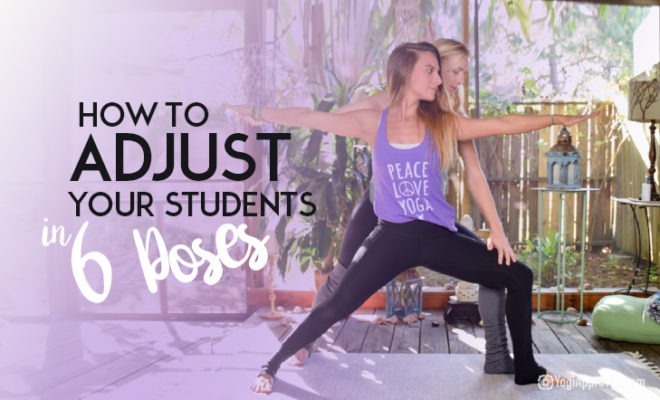

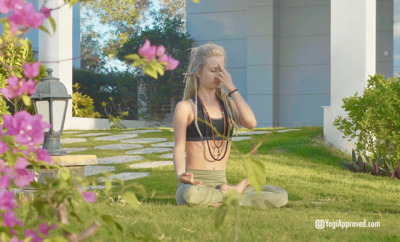
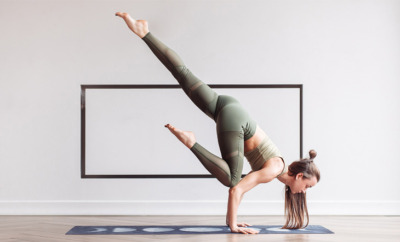
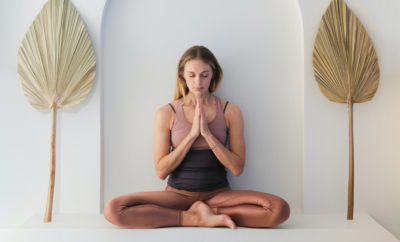








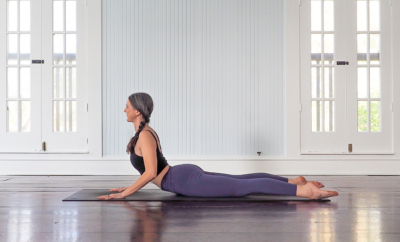
















Comments